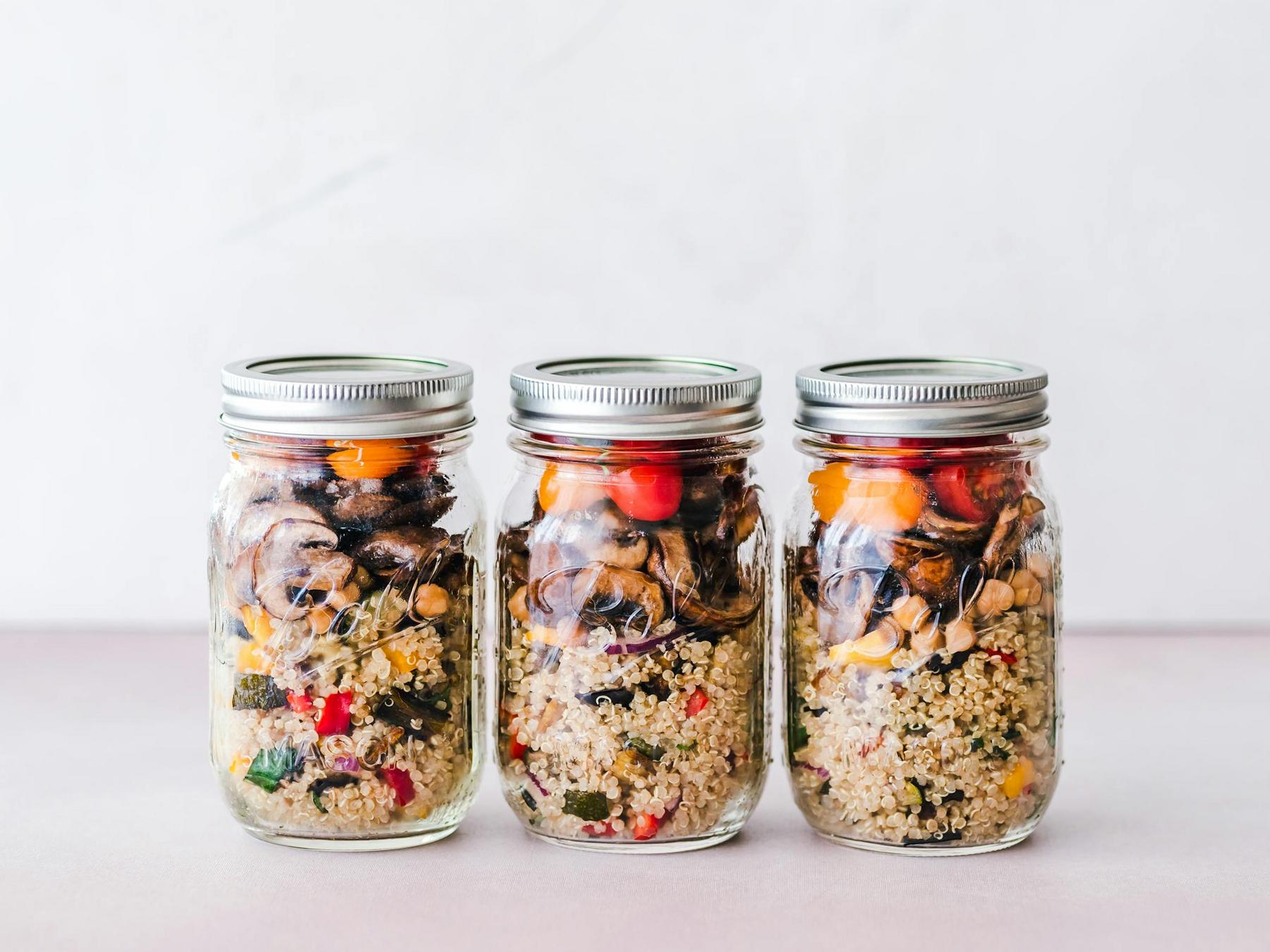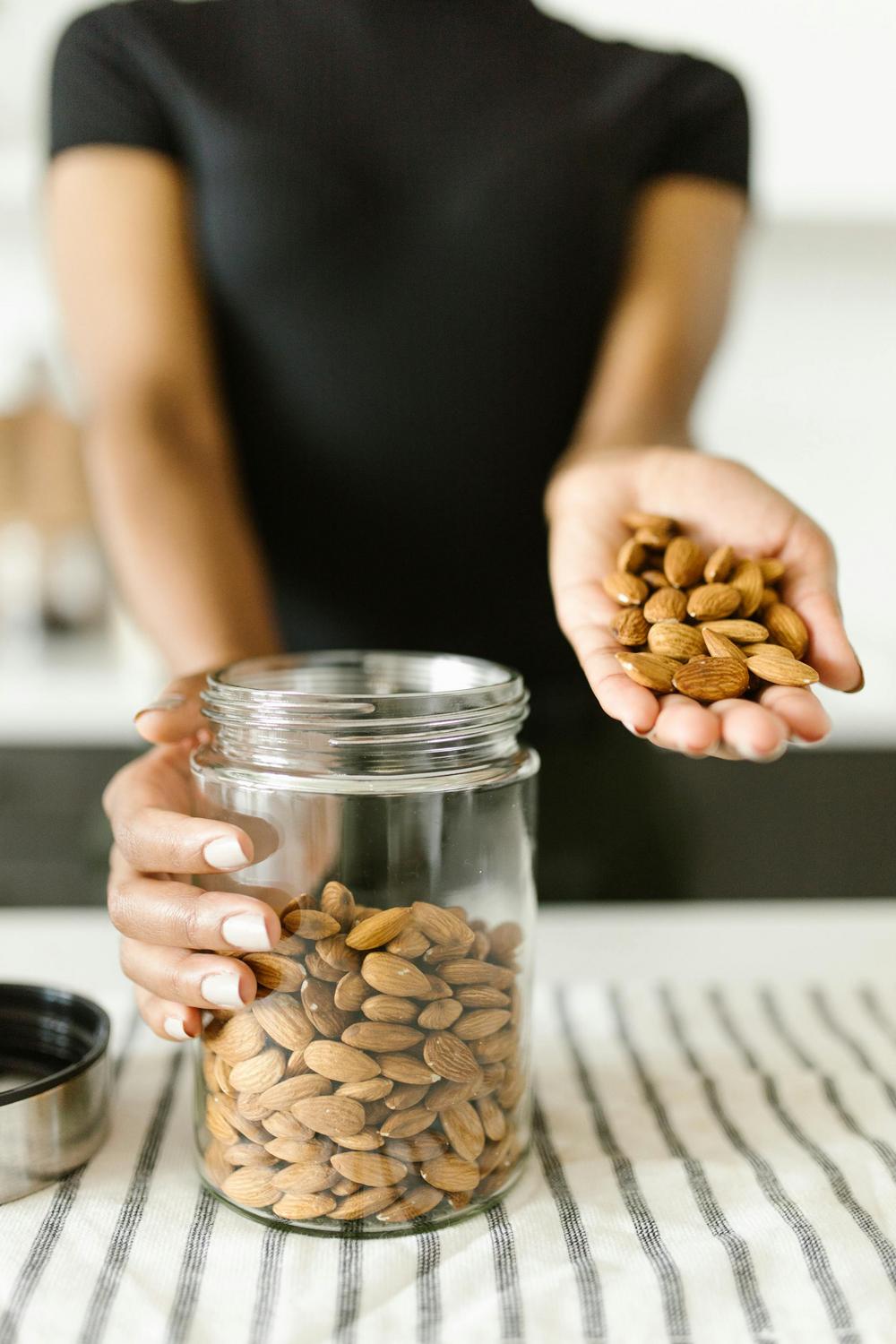In the evolving landscape of nutritional science, managing blood glucose levels has emerged as a critical factor in effective weight management. The glycaemic load (GL) approach represents a sophisticated evolution in our understanding of how carbohydrates affect our metabolism, hunger signals, and ultimately, our body weight. Rather than simply restricting calories, this evidence‐based strategy focuses on how specific foods impact blood sugar levels and the subsequent hormonal responses that influence fat storage and appetite regulation. For Australians struggling with weight management in 2025, understanding glycaemic load offers a scientifically‐grounded pathway to sustainable results.
What Is Glycaemic Load and How Does It Differ from Glycaemic Index?
The glycaemic load concept represents a significant advancement in nutritional science, refining the earlier glycaemic index (GI) by accounting for both the quality and quantity of carbohydrates consumed. While the glycaemic index ranks foods based on how quickly they raise blood glucose levels, it fails to consider portion size—a critical factor in real‐world eating patterns.
Glycaemic load addresses this limitation through a simple formula: GL = (GI × carbohydrate content in grams) ÷ 100. This calculation provides a more accurate prediction of how a specific serving of food will affect blood glucose levels. For example, watermelon has a high GI of 72 but a low GL of just 4 due to its relatively low carbohydrate content per serving, demonstrating why GL offers superior practical guidance for meal planning.
Foods are generally categorised into three GL classifications:
- Low GL: ≤10 (most non-starchy vegetables, berries)
- Medium GL: 11-19 (whole grain bread, quinoa)
- High GL: ≥20 (white rice, potato)
This distinction explains why some high-GI foods with minimal carbohydrates (like pineapple) may be preferable for weight management compared to moderate-GI but carbohydrate-dense options such as whole wheat pasta. By focusing on glycaemic load rather than simply glycaemic index, individuals can make more informed choices that better support blood sugar stability and weight management goals.
How Does Glycaemic Load Affect Weight Management?
The relationship between glycaemic load and weight regulation operates through three primary physiological mechanisms that collectively influence how the body processes and stores energy.
Insulin Modulation
High glycaemic load meals trigger significant insulin spikes, promoting fat storage while simultaneously inhibiting the breakdown of existing fat stores (lipolysis). Research published in 2025 demonstrates that diets reducing average GL by 20 points decreased fasting insulin by 18% compared to high-GL control diets. This hormonal environment creates conditions that favour weight gain and resist weight loss efforts.
Satiety Signalling
Low GL diets have been shown to extend the activity of key satiety hormones, including cholecystokinin (CCK) and glucagon-like peptide-1 (GLP-1). Clinical trials have documented reductions in hunger signals by 23-41% when participants followed low GL eating patterns. This improved appetite regulation allows individuals to naturally consume fewer calories without experiencing the intense hunger that often sabotages weight loss attempts.
Energy Partitioning
Perhaps most significantly, the glycaemic load of your diet influences where calories are directed within the body. Studies show that chronic high GL intake upregulates enzymes involved in hepatic lipogenesis (liver fat production) by 2.3-fold, directing more calories toward visceral fat storage—the metabolically active fat around organs that presents the greatest health risks.
Longitudinal research indicates that each 10-unit increase in dietary GL correlates with approximately 0.34 kg of weight gain annually in adults, highlighting the cumulative impact of blood sugar management on long-term weight trajectories.
Which Foods Should You Choose on a Low Glycaemic Load Diet?
Implementing a low glycaemic load approach requires strategic food selection rather than simply eliminating carbohydrates. The goal is to prioritise carbohydrate sources that contribute minimal glycaemic load while providing maximum nutritional benefits.
Vegetables and Fruits
Non-starchy vegetables represent the cornerstone of a low GL eating pattern. Options like leafy greens, broccoli, capsicum, and zucchini deliver fibre, vitamins, and phytonutrients with negligible GL impact. Fruits require more selective choices—berries, cherries, and stone fruits typically offer lower GL values than tropical varieties like banana or mango.
Proteins and Fats
Protein-rich foods and healthy fats are naturally low in GL and play a crucial role in moderating the glycaemic impact of meals. Incorporating quality protein sources (seafood, poultry, eggs, legumes) and beneficial fats (olive oil, avocado, nuts) not only minimises overall meal GL but actively slows gastric emptying and reduces glucose absorption rates from concurrent carbohydrate consumption.
Smarter Carbohydrates
Rather than avoiding carbohydrates entirely, a low GL approach emphasises selecting varieties with minimal blood sugar impact. Whole grains like rolled oats, barley, and quinoa generally offer lower GL values than refined counterparts, while legumes provide exceptional nutrition with surprisingly modest glycaemic effects.
| Food Category | Low GL Options (≤10) | Medium GL Options (11-19) | High GL Options (≥20) |
|---|---|---|---|
| Grains | Steel-cut oats, barley | Brown rice, quinoa | White rice, instant oats |
| Vegetables | Broccoli, spinach, capsicum | Sweet potato, corn | White potato, pumpkin |
| Fruits | Berries, cherries, grapefruit | Banana, pineapple, mango | Watermelon, dates |
| Proteins | Eggs, fish, poultry, tofu | Legumes, yoghurt | – |
| Snacks | Nuts, seeds | Wholegrain crackers | Rice cakes, pretzels |
The most effective approach typically involves allocating approximately 40% of daily carbohydrates to low GL foods (GL≤10) while permitting moderate GL options (GL≤15) in controlled portions, particularly when combined with proteins and fats that further moderate their glycaemic impact.
How Can You Implement a Glycaemic Load Approach in Your Daily Life?
Translating glycaemic load principles into practical daily habits requires strategic meal planning and composition techniques that can be systematically applied to your eating pattern.
Meal Construction Strategy
Effective glycaemic load management hinges on strategic meal construction. Research indicates that the most effective approach involves:
- Carbohydrate Redistribution: Allocate approximately 40% of daily carbohydrates to low GL foods (GL≤10) while allowing moderate GL options (GL≤15) in controlled portions.
- Nutrient Pairing: Combine carbohydrates with:
- 20-30g protein per meal (reduces postprandial GL by 12-18%)
- 10-15g monounsaturated fats (delays gastric emptying)
- 8-10g fibre (blunts glucose absorption)
This approach has been shown to achieve 32% better GL control compared to standard nutritional advice. For example, pairing quinoa (GL=13) with grilled chicken, avocado, and broccoli creates a balanced meal with moderate overall glycaemic impact despite containing carbohydrates.
Timing Considerations
Emerging evidence suggests that glycaemic load sensitivity exhibits circadian patterns, with evening meals producing larger blood glucose excursions than identical foods consumed earlier in the day. This phenomenon, termed “afternoon glucose intolerance,” suggests that lower GL choices become increasingly important as the day progresses.
Gradual Transition
Research indicates that abrupt dietary changes rarely produce sustainable results. Instead, systematically reducing GL by approximately 5-10 points weekly allows metabolic adaptation while minimising cravings and discomfort. This gradual approach has been associated with 27% greater long-term adherence compared to immediate, dramatic GL reduction.
What Does the Research Say About Glycaemic Load and Weight Loss?
The scientific evidence surrounding glycaemic load and weight management reveals nuanced but meaningful effects that depend significantly on intervention intensity and individual factors.
Clinical Trial Evidence
Randomised controlled trials have produced variable but illuminating results. While some early studies showed modest differences between calorie-matched high and low GL diets, more recent research has demonstrated that reducing dietary GL by more than 20 points can yield 4.7 kg greater weight loss than minimal GL changes, highlighting the importance of sufficient intervention intensity.
Pooled data from 101 trials reveals that low GL diets (average GL=57) achieve 3.9 kg greater weight loss than high GL regimens (GL=95), with each 10-unit GL reduction correlating with improved metabolic outcomes. Notably, women appear to exhibit heightened sensitivity to glycaemic load modifications, with a 20-point GL reduction tripling visceral fat loss compared to men in subgroup analyses.
Body Composition Benefits
Beyond simple weight reduction, low GL diets appear to offer distinct advantages for body composition. Research indicates that participants following low GL eating patterns maintained 23% greater fat-free mass compared to high GL diets with equivalent calorie intake. This preservation of metabolically active tissue may contribute to improved long-term weight maintenance and metabolic health.
Individual Variability
Perhaps most significantly, emerging research identifies substantial inter-individual differences in glycaemic load responses. Genetic variants (such as the TCF7L2 polymorphism) can alter individual GL responses by up to 32%, explaining why some individuals experience dramatic benefits from GL reduction while others show more modest effects. This variability underscores the importance of personalised approaches to glycaemic load management.
How Can Technology Help with Managing Glycaemic Load?
The integration of technology has revolutionised glycaemic load management, transforming what was once a cumbersome nutritional calculation into a streamlined, personalised approach accessible to everyday Australians.
Continuous Glucose Monitoring (CGM)
Continuous glucose monitoring represents a transformative advancement in personalised GL management. These wearable sensors provide real-time feedback on how specific meals affect individual blood glucose patterns, enabling:
- Identification of personal GL thresholds (individualised carbohydrate limits per meal)
- Real-time feedback on food combinations and their glycaemic impact
- Detection of circadian GL patterns (such as nighttime carbohydrate intolerance)
Research indicates that CGM-guided GL adjustment can yield 18% greater weight loss compared to standard care, along with 23% improvement in GL target adherence and significantly fewer hypoglycaemic events.
Digital Tracking and Support
Digital platforms have significantly reduced the complexity barrier to GL implementation. While only 12% of patients can accurately estimate GL without technological assistance, modern apps provide:
- Automated GL tracking integrated with food diaries
- Educational modules on glycaemic load principles
- Pre-calculated GL values for common foods and meals
These tools address the practical challenges that previously limited GL approach adoption, making sophisticated nutritional science accessible to the general public.
Telehealth Integration
Telehealth delivery models have demonstrated particular effectiveness for glycaemic load interventions. Research data from 2025 indicates that telehealth patients achieve 28% higher GL target adherence compared to traditional in-person care, along with 19% greater satisfaction scores and 33% lower dropout rates.
Key success factors in telehealth GL management include:
- Regular remote review of glucose data
- Automated GL feedback through mobile applications
- On-demand support from healthcare professionals
This integration of technology with clinical expertise creates a supportive framework that significantly enhances adherence to and effectiveness of glycaemic load approaches.
Understanding the Glycaemic Load Approach for Sustainable Results
The glycaemic load approach represents a sophisticated evolution in nutritional science that addresses the fundamental metabolic pathways influencing weight regulation. By focusing on how foods affect blood glucose levels, insulin response, and subsequent fat storage mechanisms, this strategy offers a physiologically sound alternative to simple calorie counting.
While not a standalone solution, glycaemic load optimisation enhances satiety, improves body composition, and supports sustainable energy balance—particularly when integrated with appropriate monitoring and personalised nutrition guidance. The most effective implementations typically combine GL education with technology-enabled monitoring and qualified healthcare oversight to create an evidence-based framework for weight management.
As our understanding of individual metabolic variability continues to advance, the future of glycaemic load approaches lies in increasingly personalised interventions that account for genetic factors, lifestyle patterns, and individual responses to create truly tailored weight management strategies.
Is a low glycaemic load diet effective for everyone trying to lose weight?
Research indicates that while most individuals benefit from glycaemic load management, the magnitude of effect varies significantly based on genetic factors, baseline insulin sensitivity, and individual glucose responses. Women appear particularly responsive to GL modifications, with studies showing they experience up to three times greater visceral fat reduction compared to men following identical GL reductions. The most dramatic benefits typically occur in individuals with existing insulin resistance or prediabetes, though most people seeking weight loss will experience some advantage from moderating glycaemic load.
How does glycaemic load differ from simply cutting carbohydrates?
Unlike strict low-carbohydrate approaches, the glycaemic load strategy focuses on carbohydrate quality and metabolic impact rather than elimination. This approach permits moderate consumption of low-impact carbohydrates that provide nutritional benefits while minimising blood sugar fluctuations. Research indicates that low GL diets delivering 40-45% of calories from carbohydrates can produce equivalent or superior weight loss compared to very low carbohydrate diets (≤20% carbohydrates) when GL values remain below 80 daily, offering greater flexibility and long-term adherence potential.
Can I combine a low glycaemic load approach with medical weight loss treatments?
Emerging evidence suggests that combining glycaemic load management with medical weight loss approaches may create synergistic effects. By stabilising blood glucose fluctuations and reducing insulin levels, low GL eating patterns may enhance the effectiveness of medical weight management by addressing complementary metabolic pathways. The most effective integrated approaches typically involve healthcare professional guidance to ensure appropriate coordination between nutritional strategies and medical interventions.
How long does it take to see results with a glycaemic load approach?
Clinical studies indicate that significant metabolic improvements begin within 2-3 weeks of adopting a low GL eating pattern, with measurable changes in fasting insulin appearing by week two. However, the weight loss timeline varies considerably based on individual factors and implementation intensity. Research shows that reducing average dietary GL by 20+ points typically produces detectable weight changes within 4-6 weeks, with continued progression over 3-6 months as metabolic adaptation occurs. Individuals with insulin resistance often experience more rapid initial results as hyperinsulinaemia resolves.
Do I need special tools to calculate glycaemic load in my diet?
While understanding basic GL principles is valuable, digital tools have largely eliminated the need for manual calculations. Modern tracking applications automatically calculate GL values based on food selections, making implementation significantly more accessible than in previous years. For those preferring simplified approaches, focusing on food categories (emphasising non-starchy vegetables, proteins, healthy fats, and minimal refined carbohydrates) effectively reduces GL without requiring specific numerical tracking for most individuals.



